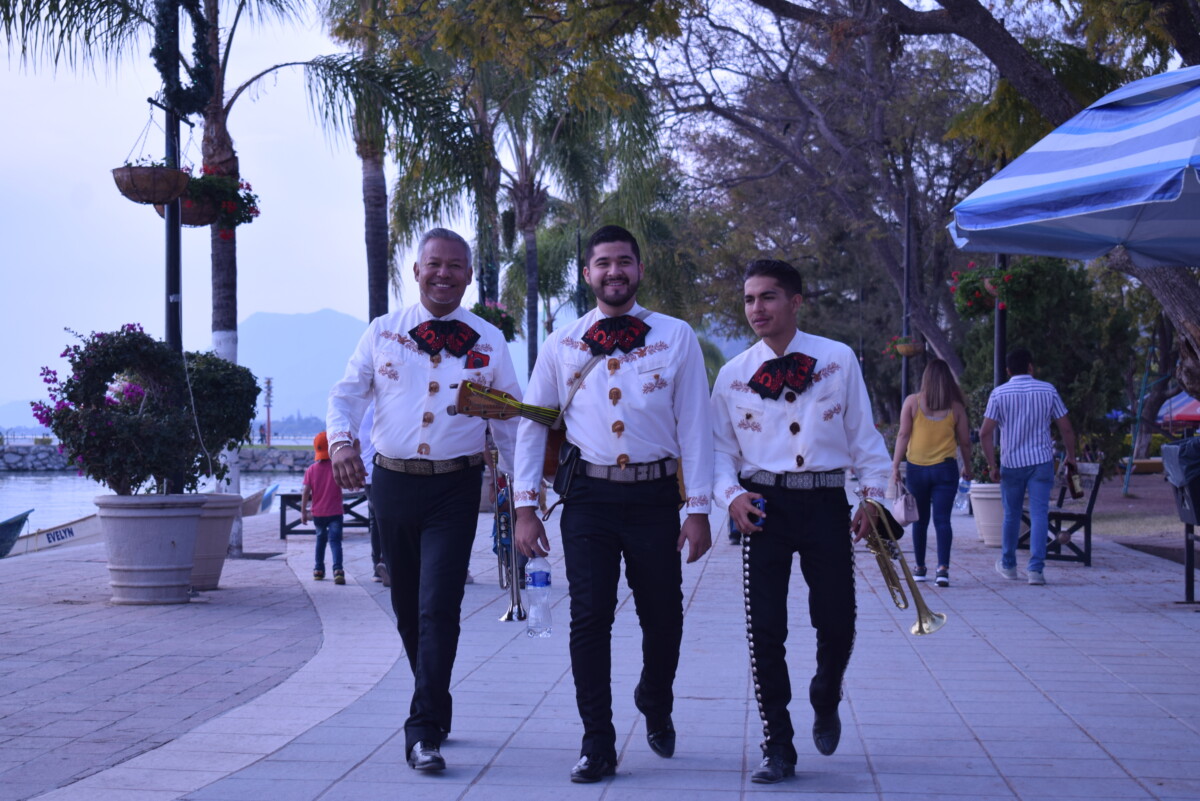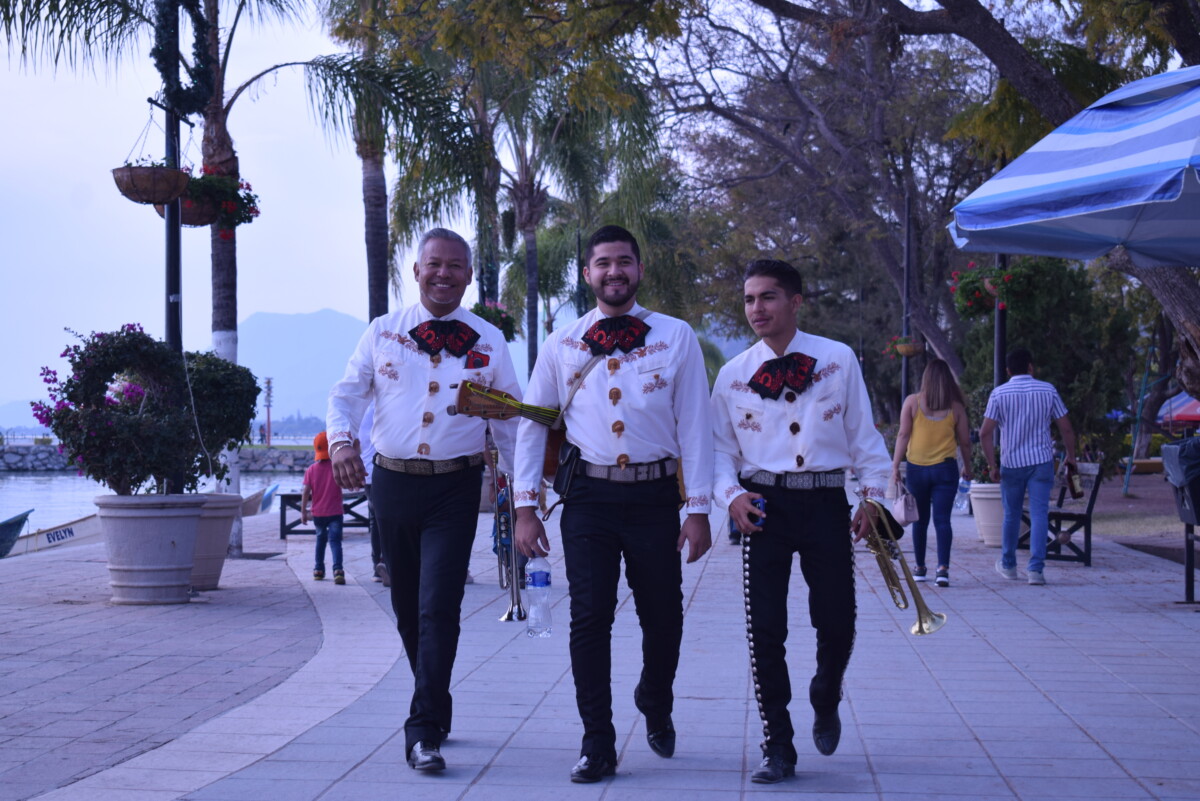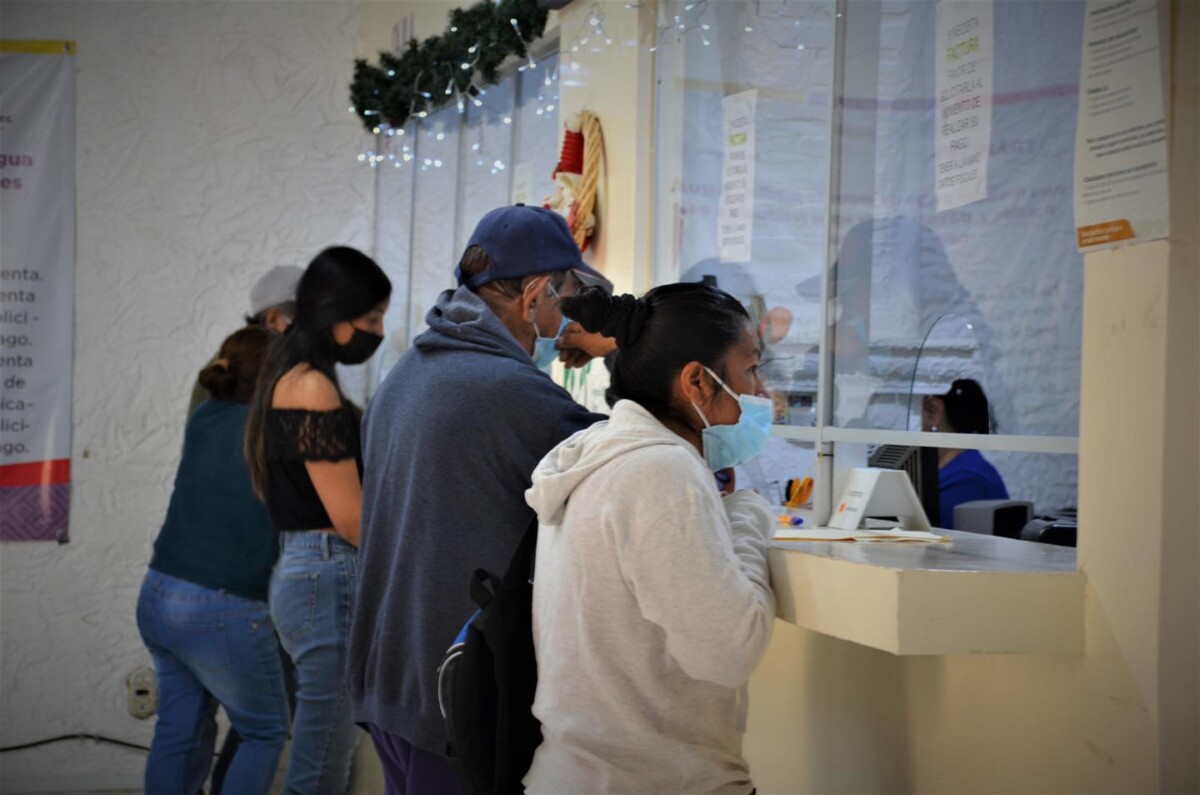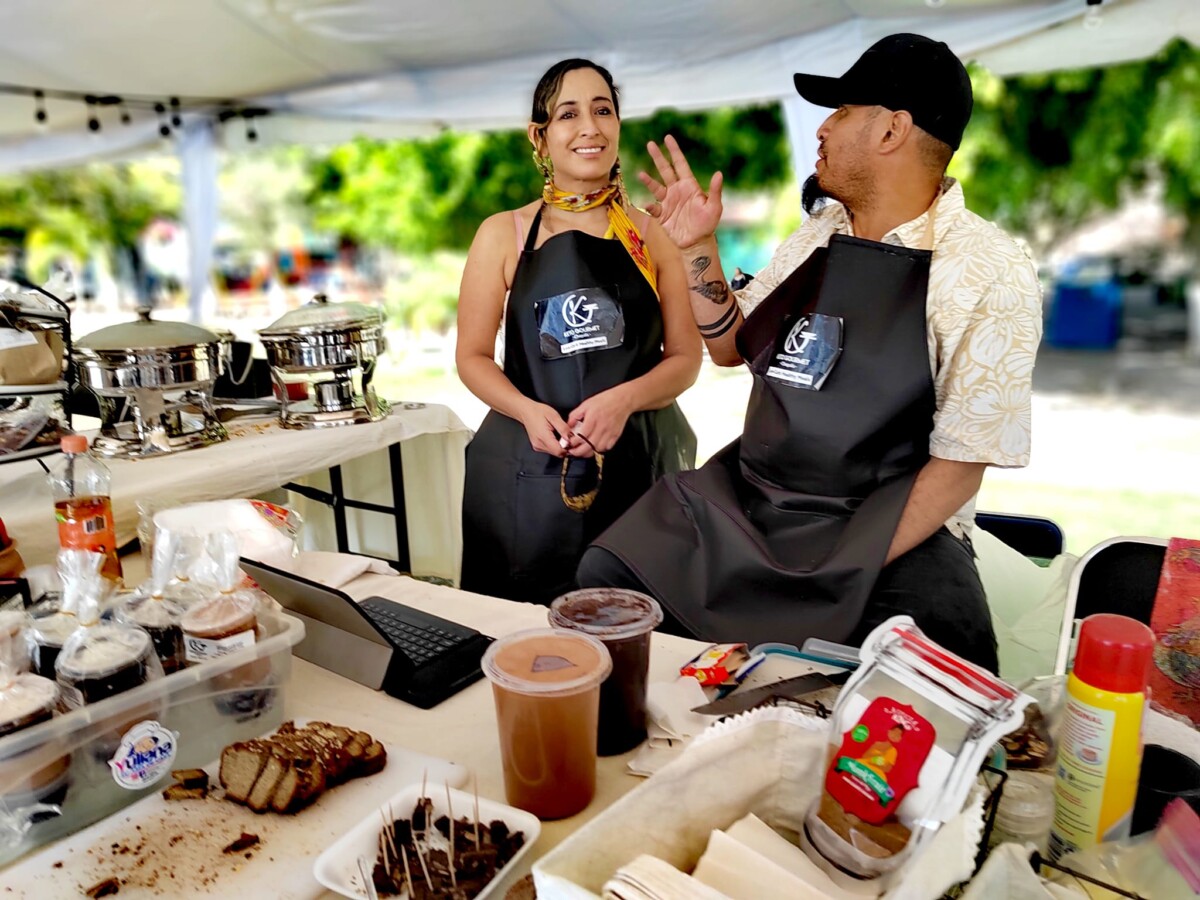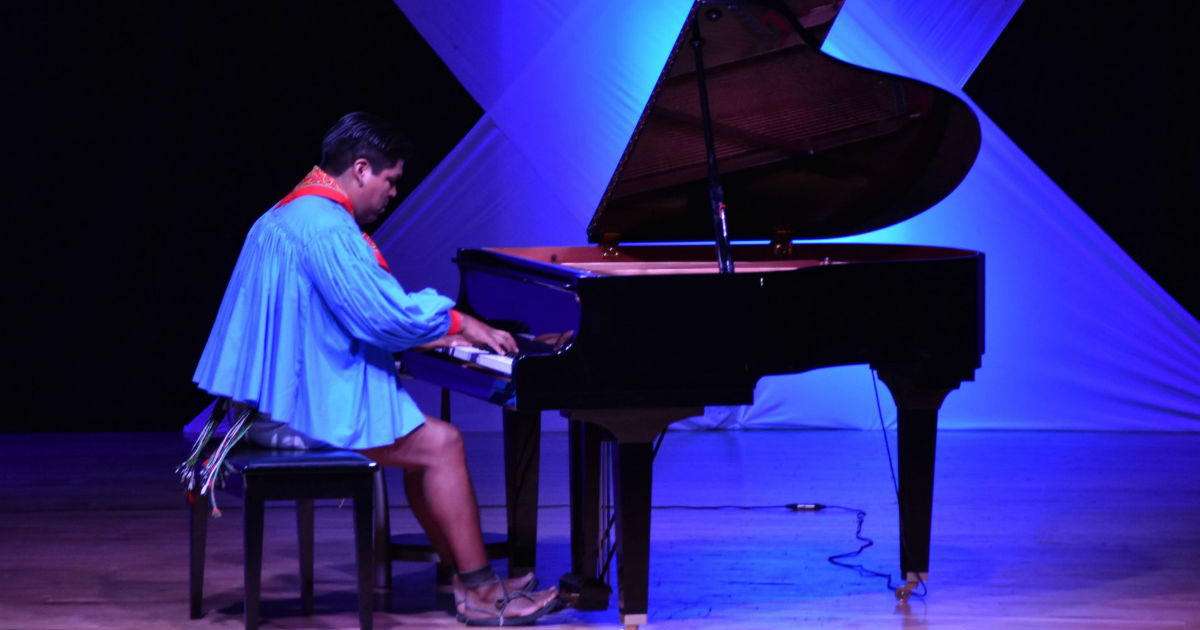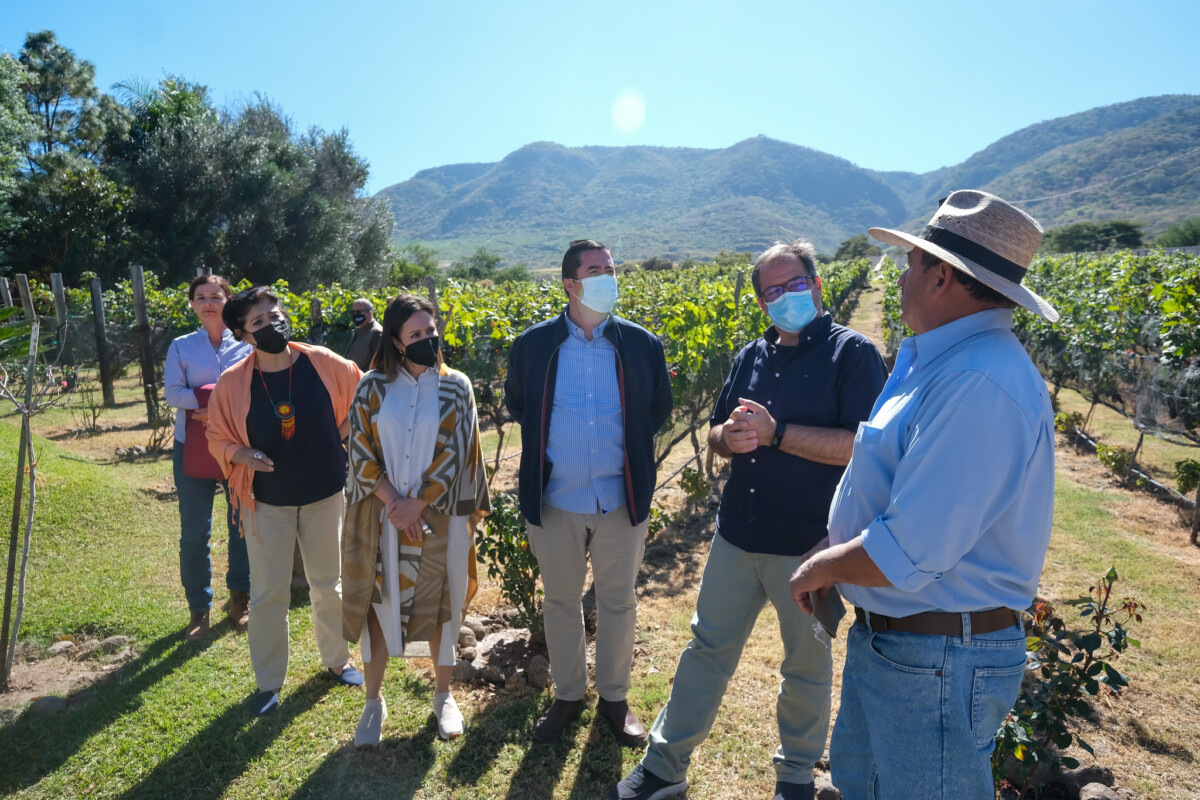Turismo
Opinión: EL GRITO EN LA LAGUNA
Lago de Chapala. Héctor Ruíz.
Por: Daniel Jiménez Carranza
Estimados lectores, en esta ocasión, he decidido obviar temas políticos, sociales, centrándome en la persona, como elemento fundamental que interactúa en sociedad, y que a partir del conocimiento individual, podremos desarrollar nuestra potencialidad en todos los aspectos de nuestra vida, no solo el material, sino el personal, el íntimo, de ahí, que es fundamental podamos identificar el yo que somos, ese yo del cual estamos tan distanciados, como consecuencia del aluvión rutinario de ocupaciones, preocupaciones, pretensiones que inundan nuestro ser y que nos absorben en el torbellino cotidiano, perdiendo de vista ese aspecto fundamental, que es el de vernos, observarnos, visualizarnos, comunicarnos con nuestros propósitos, nuestros pensamientos, nuestros deseos, nuestras concepciones, el dialogar con nosotros mismos, el preguntarnos, el cuestionarnos, el evaluarnos; a todo mundo nos va mejor ver, criticar y observar a los demás, pero el único premio que tiene su recompensa es cuando lo hacemos en nosotros mismos.
Es momento de cuestionarnos nuestra forma de pensar, de concebir las cosas, de observar nuestras actitudes y reacciones, cuando no obtenemos o logramos lo que pretendemos, cuando nos contrariamos con otras personas, cuando observamos el crecimiento de nuestra familia, preguntarnos también en qué proporción contribuimos al desarrollo de nuestro país; vivimos y nos desarrollamos dentro de un núcleo social que implica la interacción con todos sus miembros, y lo que ocurre en él, no es ajeno a nosotros, nosotros somos parte de su devenir, y con nuestra presencia y actitud, contribuimos a su realización positiva o negativa.
Es por ello que si deseamos un cambio, éste debe nacer en nuestra persona, y no fuera de nosotros, no podemos esperar que las cosas cambien en base a nuestras expectativas, nosotros somos los únicos que podemos realizar cambios en nuestra persona, y con ello, el cambio se dará como consecuencia en nuestro alrededor, atrás han quedado las creencias de que algún ser sobrenatural se aparezca para resolver nuestros problemas, la única posibilidad real, es nuestro ser a través del conocimiento y diálogo personal, el cual lo realizamos cuando encontramos un espacio durante el día en donde podamos establecer este contacto personal íntimo, que hemos desdeñado, saturándonos en su lugar con distracciones, televisión, parranda con los amigos, que en lugar de aportarnos algo, nos vacían y entramos en ese túnel oscuro, sin que visualicemos su término dentro de esa infinita obscuridad.
Chapala Musicians’ Guild Reports Good Winter Season
Members of Mariachi Centenario de Chapala (from left to right): Eric Serna, Ramón Úlises and Brandom.
Jazmín Stengel, Ajijic (JAL)-At an informal meeting between Laguna Seminario and members of the Chapala Musicians’ Guild, the mariachi “Centenario de Chapala” group’s trumpet player, Eric Serna, said «It [this season] wasn’t the best, but it was better than last year.»
Among mariachi groups that work on the malecón and Chapala tourist area such as the groups “Centenario,” “Aguila,” and “Norteño Los Alacranes,” group members mentioned having earned up to a thousand pesos a day per person during the winter season. Each mariachi group charges 250 pesos per song to the general public. Groups usually consist of five to seven musicians. The good season began in November; however, during the holidays «we even get tired of working,» Serna added.
The situation in Chapala has improved to such an extent that Serna and his colleagues have preferred to remain in Chapala instead of traveling to Puerto Vallarta as they usually do during the low season. On the other hand, the soloists working in downtown Ajijic and the surrounding restaurants considered December as having been the lowest month of the season, although in January «people have been more splendid,» agreed three area guitarists. This was echoed by merchants of the Tianguis Navideño [merchants who sold their merchandise in Chapala’s plaza last holiday season], who complained about the low sales during the winter holidays for businesses of all sizes.
Translated by MaryAnne Marble
A los músicos sí les fue bien durante las vacaciones de invierno
(de Izq. a Der.) Integrantes del Mariachi Centenario de Chapala: Eric Cerna, Ramón Úlises y Brandom.
Jazmín Stengel.- “No fue el mejor, pero sí mejor que el año pasado”, manifestó Eric Serna, trompetista del Mariachi Centenario durante una reunión informal de los músicos durante su jornada laboral, en la cual Laguna estuvo presente.
Los mariachis ‘Centenario’ y ‘Águila’, así como el norteño ‘Los Alacranes’, entre otras agrupaciones que trabajan en el malecón y áreas turísticas de Chapala, mencionaron haber obtenido ingresos de hasta mil pesos, diarios por persona durante la época de invierno.
Cabe destacar que cada mariachi cobra 250 pesos por canción al público en general y estos se integran de cinco hasta siete músicos. La temporada buena comenzó desde noviembre, sin embargo, en los días festivos «hasta nos cansamos de trabajar», agregó nuevamente Eric.
La situación en la cabecera municipal ha mejorado al grado de que Eric y sus compañeros han preferido quedarse en Chapala, en lugar de viajar a Puerto Vallarta como acostumbran en esta temporada cuando es baja, comentó el músico.
Por otra parte, los solistas que trabajan en Ajijic centro y los restaurantes a su alrededor consideraron diciembre como el mes más bajo de la temporada, siendo que en enero «la gente ha sido más espléndida«, concordaron tres de los guitarristas en el área.
Al contrario de los comerciantes del Tianguis Navideño, del área comercial del malecón e incluso los restauranteros, quienes sin importar que tan grande o chico es su negocio se quejaron de las bajas ventas durante las vacaciones invernales.
Magical Towns in Jalisco will receive 15 million pesos this year
Some of the houses on Zaragoza Street still preserve the typical architecture of Ajijic and bright murals on their facades.
Sofía Medeles (Ajijic, Jalisco) – The 2022 Jalisco State Expenditure Budget allocates 15 million pesos for the nine Magical Towns of the state, ‘which would mean 1.666 million pesos for Ajijicif, as it was last year, the budget is split equally among Jalisco’s nine Pueblos Mágicos.
In 2021 Ajijic received 1.333 million pesos for its Pueblo Mágico budget, some of which was returned unused to the State. Part of the budget was slated for a festival that never took place due to the pandemic, some for a mural contest, some for an as yet unopened information booth on the boardwalk, and some for signage that has not been completed.
The 2022 Expenditure Budget of the Government of Jalisco has prioritized health, security, education and infrastructure but it has allocated 152 million pesos to tourism, of which 15 million are for the nine Magical Towns: Tapalpa, Mazamitla, Lagos de Moreno, Mascota, San Sebastián del Oeste, Talpa de Allende, Tequila, San Pedro Tlaquepaque and Ajijic.
To learn more details about the Pueblos Mágicos in our state, visit the website: https://secturjal.jalisco.gob.mx/nuestro-estado/pueblos-magicos.
Translated by Patrick O’Heffernan
Ajijic locals say that the Coffee, Chocolate and Wine Festival was not affordable
The Coffee, Chocolate and Wine Festival was held on January 8 and 9 at the Ajijic Malecon.
Sofía Medeles (Ajijic, Jal.)– Although the «Coffee, Chocolate and Wine Festival» was well attended by tourists, the “Ajijitecos” or local residents didn’t like the event because they felt that this type of festival does not help local commerce and only benefits a few.
According to 14 locals interviewed at the festival held last weekend (January 8 and 9), it is the foreign merchants who are taking advantage of the Pueblo Mágico designation, which in fact doesn’t benefit local commerce, but rather harms it, in addition to the fact that the prices are too high for local people.
«They are only using the Pueblo Mágico designation to benefit a few, because not all of us produce the kind of things they sell at these festivals, and besides, they are expensive. Only tourists or Americans can afford to buy things from there. Many of us would like festivals that are really made for ajijitecos,» said Luis, who was present on the malecón with his family while the event was taking place.
The event, installed on the Ajijic boardwalk corridor, was attended by around 50 exhibitors, who competed with the merchants who set up shop on the boardwalk every weekend.
The street merchants interviewed pointed out that there was a lot of tourism, but sales did not go well, since the public concentrated on the festival, which offered a variety of products ranging from food and handicrafts to art pieces.
“Yes, there are a lot of people, but we’ve hardly sold anything. Look, those from the festival sell the same things I do, and that’s why I haven’t sold much,» complained one of the street merchants who set up shop in the handicraft corridor on one side of the Ajijic pier.
Ignacio, an Ajijic native, said that people don’t even come to browse, thinking that these are products they can’t afford to buy. «One prefers not to get involved in these things. Apart from the fact that there are always a lot of people who must crave these products, and I say crave, because when you ask, they tell you that a sandwich, a pair of flip-flops, or a sweet is more than 100 pesos. That’s very different, for example, from the sales that take place during the November holidays, where you know that you will be able to afford many things.”
A woman named Brenda García, originally from San Miguel de Allende, commented that something similar happens where she comes from, and stated that she believes that this happens in places where there is a lot of tourism. «What happens in Ajijic is a controversy that also happens in San Miguel de Allende, a tourist town in Guanajuato. Suddenly there are events that are focused more on tourism, or who can spend. The difference is that over there they are usually held in private places such as restaurants or vineyards, thus better targeting the public they want.”
Maximiliano «Max» Macias Arceo, in charge of the office of the Ajijic delegation, commented that one of the main problems that may cause these opinions are the high prices of the exhibitors, but that it’s not possible to compare products that companies manufacture to the handmade products.
«Between a product from an established company and one from an artisan there is no point of comparison. We understand that the prices they charge don’t suit us, but we must also consider that they come from distant places, such as Morelia, Yucatán, Oaxaca, Michoacán, and they have to cover those large expenses, so we can’t put conditions on their prices. Even so, I hope that in the future we can have more balanced events, so that we all have the opportunity to buy something we like.»
The Coffee, Chocolate and Wine Festival was born in Patzcuaro, Michoacan, a little over three years ago, and this year, for the first time, it is being held in Jalisco. The event brought exhibitors from various parts of the country – for example, Oaxaca, Mérida, Yucatán, Michoacán – and not only exhibited food, but also crafts and local art.
Translated by Sandy Britton and Patrick O’Heffernan
Coffee, Chocolate and Wine Festival lax with COVID-19 protection measures
During the day there was a large flow of attendees. Due to the constant offering of tests, not everyone wore a mask during their stay at the festival.
Sofía Medeles (Ajijic, Jal.)– In spite of assurances to the press prior to its opening, the Coffee, Chocolate and Wine Festival organizers failed to implement COVID-19 prevention protocols as they had planned.
At the pre-event press conference, event organizer Raúl Ceniceros proposed that event staff would limit and control the capacity of the crowd inside the tent by having only one entrance and one exit, and that they would take temperature checks and enforce the use of face masks for both attendees and exhibitors. However, none of these measures were fully instituted.

The inauguration of the festival was presided over by the mayor of Chapala, Alejandro Aguirre Curiel; the director of tourism, Paola de Watterlot; the head of the Ajijic delegation, Maximiliano Macías Arceo; the municipal trustee Gamaliel Soto Pérez; and the event organizer, Raúl Ceniceros.
The festival, held over two days (January 8 and 9) on the Ajijic boardwalk, was well attended and at times saw hundreds of people crowded together inside the tent. Neither exhibitors nor visitors were required to wear masks, and the public could enter at different points without using antibacterial gel or getting temperature checks. Furthermore, the constant sampling of products on offer at the event was a pretext for many not to use masks.
Event staff stationed at the designated «entrance» to the festival tent, shared that the only instructions they had been given were to ask people entering to wear their masks; to hand out sanitizing spray, and to take peoples’ temperature. They said that overall they had no major problems carrying out the safety measures, except with a few attendees who refused to comply.
From the perspective of exhibitors, however, the festival was a success. Several exhibitors interviewed stated that they are very grateful for events like these, as they provide increased exposure for their products and opportunities for sales at a time when such opportunities are scarce due to the pandemic.

The festival, held over two days (January 8 and 9) on the Ajijic boardwalk, was well attended and at times saw hundreds of people crowded together inside the tent.
«It went very well, we are delighted with the event, the first of this year,” commented an exhibitor from Do Perniler, marketers of Serrano and Iberian hams from Tequisquiapan, Querétaro. “People kept stopping by, everything was very pleasant, and everyone was open to trying our products. It went very well, and Ajijic is a wonderful place; we left very much in love.»
The event, in addition to having samples of food products and wines, also had art and handicrafts for sale. The sixty-six exhibitors included a number of local artisans, such as Luna Cacau.
The head of the Ajijic delegation, Maximiliano «Max» Macias Arceo, assured that while some might look unfavorably on the event due to the circumstances of the pandemic, there were no serious mishaps. He also commented that he viewed the event as positive, in keeping with the promoted theme and of good quality.
Translated by Rebecca Zittle
Opinion: Looking at life in Lakeside
By Patrick O’Heffernan
Michi-Cihualli is the mythological goddess who symbolizes the essence of the waters and lands of Lake Chapala. According to the legend, she is the mediator of good weather and the queen of the wind- she blows the gales of the four cardinal points, enabling the fishermen to know the direction of the squalls on the lake and t and farmers the good weather for corn.
But an important part of the legend of Michi-Cihualli is her first appearance: when the ruling tribe practiced human sacrifice and threw children into hot springs, Michi-Cihualli became enraged and created powerful winds, whirlpools, clouds of ash and eventually an earthquake to stop the desecration of her waters.
We don’t sacrifice humans any more, but we are sacrificing the Lake itself and the Ribera – the lands of Lake Chapala — with pollution, traffic, illegal development, and poverty. And Michi-Cihualli is again blowing her powerful breath over the lake in warning, only this time it is not winds she is raising, but a rekindling of the values she taught and resistance to those who would float them.
Next week, on January 20, 21, and 22, her winds will gust from one of her spiritual homes in Ajijic, La Cochera Cultural, in a three-day Festival of Michi. A residence for artists of all kinds, La Cochera Cultural is curated by Antonio López Vega, an artist who has spent a lifetime capturing and chronicling the spirit of Michi-Cihualli in painting and sculpture. The Festival he is curating at La Cochera Cultural will use film, art, music, dance, and discussion to explore the spirit and lessons of Michi-Cihualli and what is happening today in Ajijic.
In a separate but parallel effort, a group of musicians and artists are considering a concept paper Espiritu de Music y Art, to bring the lifeforce of Michi-Cihualli to Ajijic and San Antonio-Tlayacapan all year round through a marriage of art and music. They are responding to call by Ajijic Culture Director Santiago Baeza (who has just resigned) for events at local venues bringing together two of Ajijic’s greatest assets: artists and musicians.
In another separate but parallel effort, the Pueblo Mágico Ajijic Committee is anticipating an infusion of money for ventures enhancing and promoting the magic of the pueblo. While it waiting for funds, the Committee is developing plans and evaluating projects for their contribution to the Pueblo Mágico designation.
Intermitente el turismo decembrino de este año
Así luce uno entre los más de cien puestos fijos que se encuentran en el malecón de Chapala.
Jazmín Stengel.- En el segundo año de pandemia y nuevamente sin festividades decembrinas al aire libre, los turistas no tuvieron un pretexto para visitar Chapala como lo hacían en años anteriores. Basado en una serie de entrevistas realizadas a comerciantes de diferentes giros durante la primera semana de enero en la zona centro de la cabecera municipal, Laguna detectó que son pocos a los que les fue bien esta temporada.
A pesar de que el 24 de diciembre las tiendas y banquetas de la Avenida Francisco I. Madero se veían llenas de gente, la mayoría de los comerciantes declararon haber vendido menos que en años anteriores. «Incluso el año pasado con pandemia nos fue mejor», comentó una joven que vendía los tradicionales buñuelos de invierno, mientras le compraba un vaso de atole a su vecina, quién también se quejaba de haber vendido solo la mitad de lo que antes hacía.
Por otro lado, los integrantes del ‘Tianguis Navideño’ que fue reubicado en la misma plaza principal de Chapala también reclamaron la poca venta. «Estuvo mal el lugar, y poco apoyo del Ayuntamiento», fueron las palabras de Francisco (Paco) Mora. Ni se hable de la fila de comercios que fueron tapados visualmente por el tianguis, aunque permaneció el acceso a sus negocios los clientes pasaban de largo.
En el malecón, los puestos de recuerdos y accesorios también presentaron la misma queja, a diferencia de que su clientela en mayoría, son turistas que pasean por la zona. «Este año las vacaciones ni se sintieron», agregó una mujer que preparaba micheladas. Eso sí, en las áreas turísticas se aprovecharon los días festivos como Navidad (25 de diciembre), 31 de diciembre y Año Nuevo, donde los giros de alimentos y bebidas lograron sus máximas ventas de la temporada.
Entre los restauranteros también se notaron diferencias, los sitios de comida diversa tuvieron muchas reservaciones tanto de mexicanos como extranjero para celebrar la cena de Nochebuena, el 24 de diciembre, según investigó Laguna a lo largo del malecón. Sin embargo, fueron los especialistas en mariscos los más populares el 25 de diciembre y primero de enero. Pero, ni unos ni los otros lograron superar la venta de años anteriores.
«Después de dos años encerrados ya ni nos queremos», exclamó una voz desde el lugar conocido como ‘Jonhy’s Place’, quien también contó que han cambiado las costumbres de las familias que año con año atiende.
Debido a la cancelación de las presentaciones planeadas por el gobierno municipal a pocas horas de dar inicio al festejo de fin de año, muchas personas pasaron por alto la advertencia sanitaria y buscaron un sitio de agrado para continuar la noche, lo que provocó un llenó en casi todos los bares de la zona. Lamentablemente, noches como esas fueron pocas.
Los que menos sufrieron las bajas de este año fueron los hoteleros, quienes a pesar de que tampoco lograron alcanzar las estadísticas de otros años, sí mantuvieron un cupo parcialmente lleno durante las dos semanas de vacaciones.
Se presentará el músico rarámuri Romeyno Gutiérrez en el Centro Cultural González Gallo
El músico rarámuri Romeyno Gutiérrez Luna se ha presentado en Europa y Estados Unidos con su mezcla de temas clásicos y la música de su pueblo.
Redacción.- Romeyno Gutiérrez Luna es un músico rarámuri, que ofrecerá un concierto gratuito en el Centro Cultural González Gallo, en el municipio de Chapala, el próximo jueves 13 de enero, a las 18:00 horas.
En su repertorio, el pianista originario del municipio de Batopilas, Chihuahua, combina una selección de piezas clásicas de música occidental, con transcripciones, que él mismo ha realizado, a partir de la música de su pueblo.

La entrada a ambos conciertos es gratuita. Para reservar un lugar en Chapala es necesario mandar un mensaje directo en la página: www.facebook.com/CCGonzalezGallo con nombre completo o vía Whatsapp al número 3331707410.
La carrera de Romeyno comenzó en Retosachi, su tierra natal, donde su padre había forjado una amistad con el pianista e investigador estadounidense Romayne Wheeler, quien después sería su padrino y maestro. Durante años le transmitió su conocimiento musical y le mostró a Mozart, a Chopin, a Schubert, lo que encendió la llama de la inspiración en el joven rarámuri.
Con los años, el pianista perfeccionó sus habilidades y acompañaba a su padrino en algunas presentaciones, hasta que logró comenzar su trayectoria como solista, aunque siempre respaldado por su mentor. Desde entonces, Romeyno Gutiérrez ha viajado por Europa y Estados Unidos con su mezcla de temas clásicos y la música de su pueblo, además se presenta con indumentaria típica de su pueblo y se ha convertido en un embajador de los tarahumaras ante el mundo.
Promoverán el turismo vinícola para Chapala y Tuxcueca
Funcionarios estatales y municipales en los viñedos de Tuxcueca. Foto: Secretaría de Turismo Jalisco.
Arturo Ortega. – Los municipios de Chapala y Tuxcueca serán promovidos como destinos turísticos para los amantes de los vinos, luego de la visita del coordinador de Crecimiento y Desarrollo Económico del Gobierno del Estado de Jalisco, Xavier Orendáin de Obeso, a la ribera del lago más grande de México.
El funcionario estatal informó su interés por promover a los municipios ribereños de la región como zona de turismo enológico, en cuyos recorridos se incluiría la visita a los viñedos y fábricas de vino.
Para el desarrollo de la propuesta se buscará un modelo integral que impulse el desarrollo del turismo de una manera ordenada y sostenible, incluyendo la capacitación de prestadores de servicio.
La visita que se efectuó a los viñedos del Tejón y Cava Chalupo ubicados en San Luis Soyotlán, municipio de Tuxcueca, donde la uva para producción de vinos blancos, rosados, espumosos y tintos es orgánica y ofrecen comida para maridar a los visitantes.
“Que podamos tener una industria unida, que podamos tener las áreas protegidas, y venimos a pedirles un voto de confianza. Abrir estas nuevas oportunidades para el desarrollo es lo que nos mueve, y brindo por ese compromiso, que podamos volver pronto y que vayamos viendo las cosas realizadas, es un privilegio que nos reciban a su equipo, a la secretaría y a mí y a todos los que están con nosotros», externó el coordinador de Crecimiento Económico.
El brindis estuvo acompañado por la titular de la Secretaría de Turismo de Jalisco, Claudia Vanessa Pérez Lamas, además de los alcaldes del municipio anfitrión, Luis Antonio Aceves García y de Chapala, Alejandro de Jesús Aguirre Curiel.
© 2016. Todos los derechos reservados. Semanario de la Ribera de Chapala

